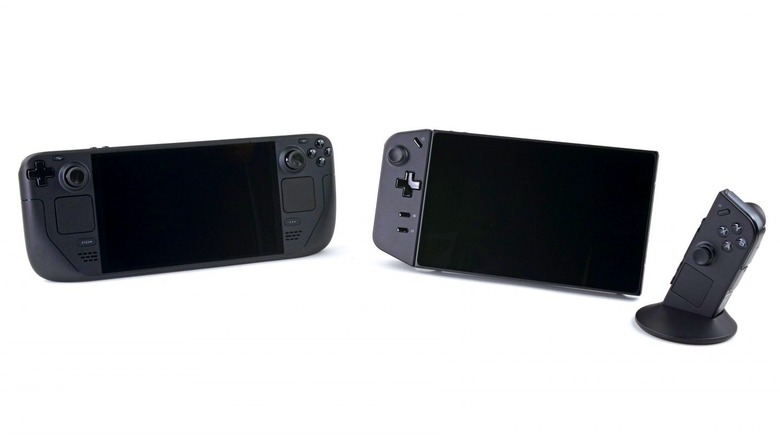Steam Deck OLED And Legion Go Face Off In iFixit Fixability Teardown
If you believe that we're living in the greatest era of handheld gaming and repairable gadgets, the folks over at iFixit have published a detailed side-by-side teardown of the Lenovo Legion Go and Valve's Steam Deck OLED to show their inner mechanics for your watching pleasure. Starting with the screen, the teardown suggests that taking out the display units on the Lenovo handheld would require more precision as there was minimal support underneath the panel. The Steam Deck's OLED screen wasn't exactly a cakewalk to take out, as it still requires a bunch of wedge inserts, a suction cup, and a bit of warmth to loosen up the glue.
Where the two devices really deviate in different directions, albeit both to a positive end, is the joystick. On the Steam Deck OLED, it is easy to take out the thumbstick, and the ease of repairing is also improved this time around. However, it's still your usual membrane-based joystick, which means it has components that will wear off over time and lead to erratic movement controls. In the gaming universe, that's drifting for you, something Nintendo Switch owners are all too familiar with. Lenovo embraced the current hot favorite of the gaming community –- Hall effect sensors –- which rely on a magnetic movement system for thumbsticks. That means no contact between fragile components that could affect its sensitivity over time and, as a result, no drifting risks.
A close skirmish won by experience
Another area where the two brands take a different approach is how easy it is to take out the battery units. Steam Deck OLED is still loyal to the cause of smattering a generous heap of glue, which needs heating and prying to take the L-shaped battery out. The Legion Go makes it a tad difficult to access the battery by hiding it behind wires and brackets. However, removing it only requires you to pull flexible adhesive tabs, and it comes off without any risky business.
Notably, the internal engineering between the two handhelds is quite different. The Steam Deck was designed with repairability as one of the key priorities, and that reflects the moment you pop open its shell. In fact, Valve made some crucial changes over the past two generations despite the front design staying identical. iFixit notes that screw pillars on the OLED model have been upgraded with metal threads, which significantly decreases the chances of them getting stripped compared to the previous-gen's plastic threads.
The Lenovo handheld could've done a better job with cable management and ease of accessing the internal components. However, both the gaming consoles still stick with soldered slots for the microSD card and the USB-C port, which is less than ideal from a longevity perspective. Overall, neither device is a repairability hell, but the Steam Deck came out on top with a repairability score of nine out of 10, compared to the eight out of 10 figure posted by the Legion Go.

